
The Tlingit or Lingít are Alaska Native Indigenous Peoples of the Pacific Northwest Coast of North America and are one of two-hundred twenty-nine (229) federally recognized Tribes of Alaska. Their language is the Tlingit language, in which the name means 'People of the Tides'. The Russian name Koloshi or the related German name Koulischen may be encountered referring to the people in older historical literature, such as Grigory Shelikhov's 1796 map of Russian America. Tlingit people today belong to two federally recognized Alaska Native tribes: the Central Council of the Tlingit & Haida Indian Tribes of Alaska and the Yakutat Tlingit Tribe.

From 1732 to 1867, the Russian Empire laid claim to northern Pacific Coast territories in the Americas. Russian colonial possessions in the Americas are collectively known as Russian America. It consisted mostly of present-day Alaska in the United States, but also included the outpost of Fort Ross in California, and three forts in Hawaii, including Russian Fort Elizabeth. Russian Creole settlements were concentrated in Alaska, including the capital, New Archangel (Novo-Arkhangelsk), which is now Sitka.

Sitka is a unified city-borough in the southeast portion of the U.S. state of Alaska. It was under Russian rule from 1799 to 1867. The city is situated on the west side of Baranof Island and the south half of Chichagof Island in the Alexander Archipelago of the Pacific Ocean. As of the 2020 census, Sitka had a population of 8,458, making it the fifth-most populated city in the state.
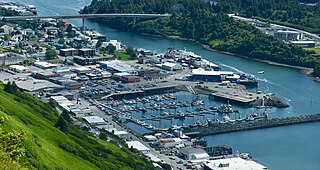
The City of Kodiak is the main city and one of seven communities on Kodiak Island in Kodiak Island Borough, Alaska. All commercial transportation between the island's communities and the outside world goes through this city via ferryboat or airline. As of the 2020 census, the population of the city is 5,581, down from 6,130 in 2010. It is the tenth-largest city in Alaska.

The Eyak are Native American Indigenous peoples historically located on the Copper River Delta and near the town of Cordova, Alaska. Today, Eyak people live in Cordova, Yakutat, across Alaska, and the U.S. Many Eyak descendants do not qualify to be tribal members in the Native Village of Eyak, a federally recognized Alaska Native tribe which was established through the Alaska Native Claims Settlement Act in 1971. This is due to the enrollment qualifications that extend tribal citizenship only to those who reside in the town of Cordova for the majority of the year.
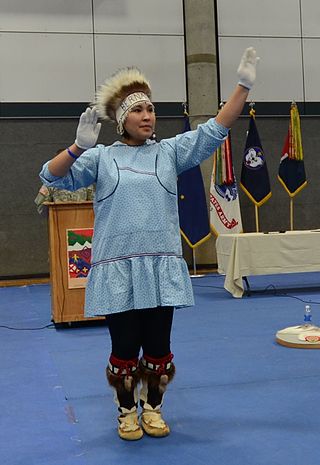
Alaska Natives are the Indigenous peoples of Alaska and include Iñupiat, Yupik, Aleut, Eyak, Tlingit, Haida, Tsimshian, and a number of Northern Athabaskan cultures. They are often defined by their language groups. Many Alaska Natives are enrolled in federally recognized Alaska Native tribal entities, who in turn belong to 13 Alaska Native Regional Corporations, who administer land and financial claims.

The Harriman Alaska expedition explored the coast of Alaska for two months from Seattle to Alaska and Siberia and back again in 1899. It was organized by wealthy railroad magnate Edward Harriman. Harriman brought with him an elite community of scientists, artists, photographers, and naturalists to explore and document the Alaskan coast.
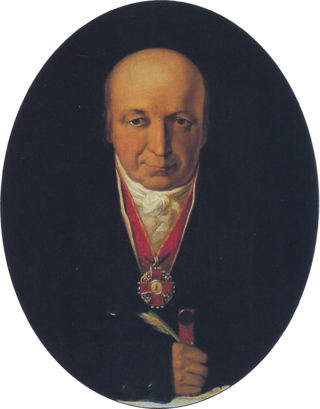
Alexander Andreyevich Baranov, sometimes spelled Aleksandr or Alexandr and Baranof, was a Russian trader and merchant, who worked for some time in Siberia. He was recruited by the Shelikhov-Golikov Company for trading in Russian America, beginning in 1790 with a five-year contract as manager of the outpost. He continued to serve past the end date of his contract.
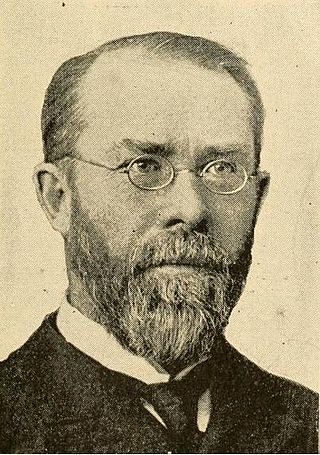
Sheldon Jackson was a Presbyterian minister, missionary, and political leader. During this career he travelled about one million miles and established more than one hundred missions and churches, mostly in the Western United States. He performed extensive missionary work in Colorado and the Alaska Territory, including his efforts to suppress Native American languages.
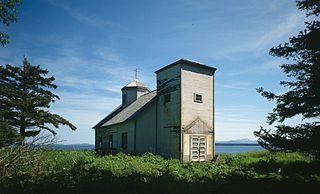
Afognak (; also Agw'aneq in Alutiiq was an Alutiiq village on the island of Afognak in Kodiak Island Borough, Alaska, United States. It was located on Afognak Bay on the southwest coast of the island, three miles north of Kodiak Island. The site is now within the CDP of Aleneva.

The Battle of Sitka was the last major armed conflict between Russians and Alaska Natives, and was initiated in response to the destruction of a Russian trading post two years before. The primary combatant groups were the Kiks.ádi Clan of Sheetʼká Xʼáatʼi of the Tlingit nation and agents of the Russian-American Company assisted by the Imperial Russian Navy.

The history of Alaska dates back to the Upper Paleolithic period, when foraging groups crossed the Bering land bridge into what is now western Alaska. At the time of European contact by the Russian explorers, the area was populated by Alaska Native groups. The name "Alaska" derives from the Aleut word Alaxsxaq, meaning "mainland".

Nora Marks Keixwnéi Dauenhauer was a Tlingit poet, short-story writer, and Tlingit language scholar from Alaska. She won an American Book Award for Russians in Tlingit America: The Battles of Sitka, 1802 And 1804. Nora was Alaska State Writer Laureate from 2012 - 2014.

As of 2020, Alaska has a population of 733,391.

The history of the Tlingit includes pre- and post-contact events and stories. Tradition-based history involved creation stories, the Raven Cycle and other tangentially-related events during the mythic age when spirits transformed back and forth from animal to human and back, the migration story of arrival at Tlingit lands, and individual clan histories. More recent tales describe events near the time of the first contact with Europeans. European and American historical records come into play at that point; although modern Tlingit have access to those historical records, however, they maintain their own record of ancestors and events important to them against the background of a changing world.

Raspberry Island is an island of the Kodiak Archipelago located in the Gulf of Alaska in the U.S. state of Alaska. It is located two miles northwest of Whale Island, and just across the mile-wide Raspberry Strait from the southwestern end of Afognak. The island is separated from Kodiak Island by the Kupreanof Strait, with the Shelikof Strait to the northwest. Raspberry Island is 18 miles (29 km) long with a width that varies from 3 miles (4.8 km) to 8 miles (12.9 km). The highest point on the island is 3,300 ft.

The St. Nicholas Russian Orthodox Church in Juneau, Alaska, United States, was built in 1893 and was listed on the National Register of Historic Places in 1973. The church is a part of the Diocese of Alaska of the Orthodox Church in America.

Baranof Island is an island in the northern Alexander Archipelago in the Alaska Panhandle, in Alaska. The name "Baranof" was given to the island in 1805 by Imperial Russian Navy captain U. F. Lisianski in honor of Alexander Andreyevich Baranov. It was called Sheet’-ká X'áat'l by the native Tlingit people. It is the smallest of the ABC islands of Alaska. The indigenous group native to the island, the Tlingit, named the island Shee Atika. Baranof island is home to a diverse ecosystem, which made it a prime location for the fur trading company, the Russian American Company. Russian occupation in Baranof Island impacted not only the indigenous population as well as the ecology of the island, but also led to the United States' current ownership over the land.
Walter Alexander Soboleff was a Tlingit scholar, elder and religious leader. Soboleff was the first Native Alaskan to become an ordained Presbyterian minister.
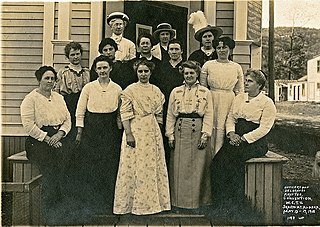
Women's suffrage was won fairly easily for non-native women in Alaska in 1913. Prior to becoming a territory, non-native women were able to vote in school board elections. Women's suffrage work took place in the Alaska chapters of the Women's Christian Temperance Union (WCTU). After Alaska was admitted as a territory, the first Territorial Legislature passed a women's suffrage bill in 1913 and was signed into law on March 21. This law only applied to non-native women since Alaska Natives were not considered citizens of the United States. Alaska Natives continued to fight for the right to vote, along with other civil rights throughout the twentieth and twenty-first century.



















